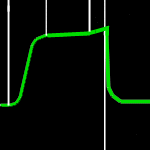The primary goal of anesthesiologists is to prevent hypoxia, and capnography helps to identify situations that can lead to hypoxia if uncorrected. Moreover, it also helps in the swift differential diagnosis of hypoxia before hypoxia leads to irreversible brain damage.
Because of these advantages, the utility of capnography has recently been extended outside of the operating room arena to emergency rooms, endoscopic suites, x-ray rooms, and even to on-site emergency and trauma fields. Therefore, a section for emergency personnel has been included.
The subject matter is divided into several sections. Users can double click on the section of their choice. Several animations are used to explain underlying concepts. Each section is also accompanied by ‘highlights’ for quick understanding. A section on ‘Anesthesia breathing systems’ has been recently included. There is also a section ‘Capnomagic screen’ where several capnograms are arranged by name around a central screen. Placing the mouse cursor over the capnogram title brings up the relevant tracing on the central screen. A quiz is included to allow users to gauge their levels of understanding and learning.
The search engine on this site facilitates finding information on topics of interest. It has become a very useful feature as the site has grown. Unlike a textbook, this site undergoes frequent updates to reflect current understanding and new concepts of capnography thus enhancing the breadth and depth of the subject matter.
Although capnography evolved from operating rooms, it is currently used by many health care providers outside of the operating room to enhance the safety of patients under their care. Today there is a need to provide specific information on capnography that is relevant to each specialty (Specialty Applications).Keeping in line with the author’s philosophy, this site is available to everyone all over the world for free. This accessibility to information on capnography not only enhances the safety of patients across the globe but encourages health care personnel, engineers, and medical and technical students to create innovations in the field of capnography to enhance the safety of our patients.
Bhavani Shankar Kodali MD
Professor of Anesthesiology, University of Maryland School of Medicine, Baltimore, MD, USA
Ahalya Kodali MD
Saint Louis Children’s Hospital
Dated October 2020
 |
 |
 |

 Twitter
Twitter Youtube
Youtube










